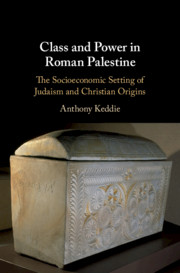Book contents
- Class and Power in Roman Palestine
- Class and Power in Roman Palestine
- Copyright page
- Dedication
- Contents
- Figures
- Tables
- Acknowledgments
- Note on the Text
- Abbreviations
- Figures
- Introduction
- CHAPTER 1 Urban Development and the New Elites
- CHAPTER 2 Land Tenancy and Agricultural Labor
- CHAPTER 3 Taxation
- CHAPTER 4 Economy of the Sacred
- CHAPTER 5 Material Culture from Table to Grave
- Conclusion
- Book part
- Bibliography
- Index of Ancient Sources
- Index of Subjects
- References
Bibliography
Published online by Cambridge University Press: 03 October 2019
- Class and Power in Roman Palestine
- Class and Power in Roman Palestine
- Copyright page
- Dedication
- Contents
- Figures
- Tables
- Acknowledgments
- Note on the Text
- Abbreviations
- Figures
- Introduction
- CHAPTER 1 Urban Development and the New Elites
- CHAPTER 2 Land Tenancy and Agricultural Labor
- CHAPTER 3 Taxation
- CHAPTER 4 Economy of the Sacred
- CHAPTER 5 Material Culture from Table to Grave
- Conclusion
- Book part
- Bibliography
- Index of Ancient Sources
- Index of Subjects
- References
- Type
- Chapter
- Information
- Class and Power in Roman PalestineThe Socioeconomic Setting of Judaism and Christian Origins, pp. 261 - 332Publisher: Cambridge University PressPrint publication year: 2019

